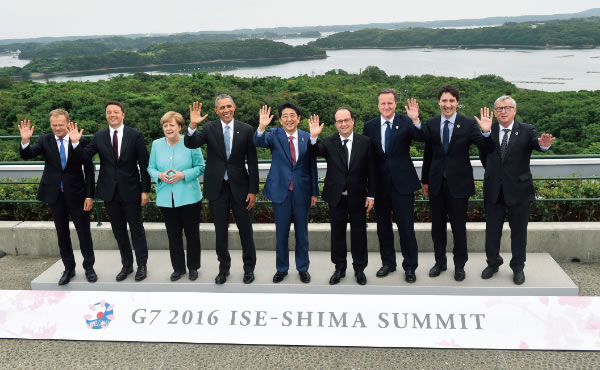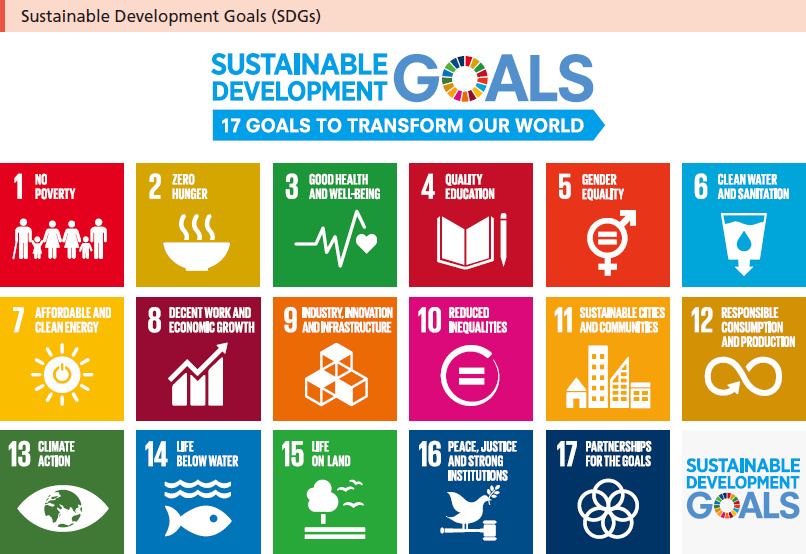Part I The G7 Ise-Shima Summit and the Development Cooperation Charter

Local people of the Brenna Province in central Ethiopia gathered around a well constructed with Japanese assistance to help address the water shortage caused by drought. (Photo: Miho Harada / Embassy of Japan in Ethiopia)
Initiatives of Japan as the G7 Presidency

Leaders participating in the G7 Summit, held in Ise-Shima, Mie Prefecture in May 2016. 2016 marked the sixth G7 presidency of Japan.
Japan intends to continue developing a prosperous and peaceful society by cooperating with the international community to tackle various global challenges in the world and building a peaceful, stable and prosperous international community. In May 2016, Japan held the presidency of the G7 Ise-Shima Summit, honestly addressed the development issues and global issues that the world faces, and led the discussions of the international community. In this section we mainly introduce the outcomes of Japan’s exercising leadership while holding the G7 presidency to address these challenges and its efforts to overcome them, etc. Furthermore, we would like to look back on the steps taken by Japan in 2016 under the Development Cooperation Charter that was revised for the first time in 12 years in February 2015.
Section 1 Sustainable Development Goals (SDGs)
The G7 Ise-Shima Summit was the first summit after the adoption of the SDGs, and the G7 affirmed its commitment to the SDGs as a priority issue in development cooperation. Before this, the 2030 Agenda for Sustainable Development (2030 Agenda) was adopted at the United Nations Summit in September 2015, as the universal development goals of the entire international community to be achieved by 2030. The 2030 Agenda, unlike its predecessors the Millennium Development Goals (MDGs) which focused on developing countries, was formulated as a set of development goals to be undertaken by both developing countries and developed countries together. The SDGs are comprised of 17 goals and 169 targets. The goals in the SDGs are comprehensive and wide-ranging and cover the issues listed in the MDGs such as poverty, hunger, health, education, gender, water and sanitation and new goals in relation to economic growth, infrastructure, and climate change countermeasures that were not clearly included in the MDGs.
In order to lead the G7, Japan established the SDGs Promotion Headquarters headed by the Prime Minister and composed of all ministers in May 2016, and decided to compile Japan’s SDGs Implementation Guiding Principles at the first meeting.
The Guiding Principles were prepared in close consultation with a wide range of stakeholders. SDGs Promotion Roundtable Meetings under the auspices of the SDGs Promotion Headquarters were held twice, in September and November 2016. The meetings were attended by a wide range of participants including NGOs/NPOs, academia, private sector, and international organizations. In addition, ideas and suggestions were gathered through public comments from a wide range of stakeholders. As a result, at the second meeting of the SDGs Promotion Headquarters held in December the same year, the SDGs Implementation Guiding Principles were decided.
In the Implementation Guiding Principles, it states “Become a leader towards a future where economic, social and environmental improvements are attained in an integrated, sustainable and resilient manner while leaving no one behind” as the vision of Japan. Also, it stipulates five implementation principles and follow-up. The Guiding Principles were prepared in an attempt to capture the SDGs in accordance with the Japanese situation and sets out eight priority issues including “Empowerment of All People” and “Achievement of Good Health and Longevity.” The annex of the Guiding Principles states 140 concrete measures covering actions in Japan and overseas submitted by the relevant government ministries and agencies.
Furthermore, at the second meeting of the SDGs Promotion Headquarters, Prime Minister Abe announced specific promotion measures aimed at achieving the SDGs. Regarding global health, he presented a policy of providing assistance with a total value of approximately $400 million for international health organizations in the areas of infectious disease control, health system strengthening, women’s health, and polio eradication. In addition, he stated Japan’s intention to provide new financial assistance totaling $500 million to further expand, both in quantity and quality, efforts to support refugees and countries accepting refugees by actively harnessing our experiences to date and our capabilities. Moreover, for promoting the contribution of women in developing countries, he stated that Japan would steadily proceed with initiatives valued at more than $3 billion by the year 2018 with emphasis given to promoting women’s and girls’ rights, creating an enabling environment for women and girls to reach their full potential, and advancing women’s leadership.
In Japan, the relevant government ministries and agencies are working together under the auspices of the SDGs Implementation Guiding Principles and collaborating with stakeholders in all areas to lead the initiatives of the international community for achieving the SDGs.

